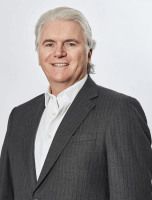In 1888, Karl Benz is issued with the world’s first driver’s licence and his wife, Bertha, drives a car bult by Karl on the first “long distance” car trip – Mannheim to Pforzheim (64km); Jack the Ripper stalks Whitechapel; John Dunlop patents the pneumatic bicycle tyre, whilst Joseph Assheton Fincher files a patent for “Tiddly-Winks”. Annie Besant writes about the working conditions of girls making matches in London, leading to the London matchgirl’s strike; Vincent Van Gogh cuts off part of his ear; George Eastman registers KODAK as a trade mark and patents a roll film camera; and William D. Rolingson commences practice as a Patent Agent in the Australian colony of Victoria. In the following year, Albert Swanson joined Rolingson in the firm Swanson & Rolingson, which was subsequently acquired by Edwin Phillips in 1892, and renamed Phillips Ormonde & Co.
This year, Phillips Ormonde Fitzpatrick celebrates 135 years of continuous operation. It’s a long time to be in the industry, spanning many decades and many major world events – predating even Australia’s federation as a nation in 1901. Prior to Federation, each of the six colonies in Australia had its own intellectual property laws, but our fledgling firm at the time, based in Melbourne, Victoria, encompassed all of the colonies. This became easier after Federation, with the introduction of the first Australian Patents Act in1903, Trade Marks Act in 1905 and Designs Act in 1906.
Edwin Phillips, already a member of the British Chartered Institute of Patent Agents as well as a Patent Agent under the former colonial legislation, became a registered Australian Patent Attorney in 1904. He was later joined in his practice by Cecil Woods Le Plastrier and Victor Kelson, forming the firm Phillips Ormonde Le Plastrier and Kelson. Some of the older law reports in our library still have a “P.O.L.K.” stamp inside the cover; even then our full name had to be abbreviated.
Philips retired in 1921, two years before his death at the age of 64, and Le Plastrier became senior partner. Subsequent partners to the firm included Geoffrey Sly, who was senior partner from 1952 until 1964, Betram Fitzpatrick, who was senior partner from 1964 until 1972, and Bert’s son David, who was senior partner from 1972 until 2009. It was under Bert’s leadership that the name of the firm was changed in 1967 to Phillips Ormonde & Fitzpatrick. After losing the ampersand in 2008, the firm Phillips Ormonde Fitzpatrick continues today, one hundred and thirty-five years after it was founded, with 27 partners, and offices in Melbourne, Sydney, Adelaide, Geelong and Hobart.
One critical piece of trivia remains however; where did the name Ormonde come from? Those who actually knew Phillips are long gone now, but the prevailing story is that, just as Lady Bracknell in The Importance of Being Earnest found that “Three addresses always inspire confidence, even in tradesmen”, Phillips had felt that two surnames in a firm name would inspire confidence in the firm. Accordingly, he added Ormonde, which was possibly his wife’s maiden name, to his own to form Phillips Ormonde & Co,. And so, Ormonde has remained part of the firm name ever since!
Our history and legacy is long and proven, and our reputation over this time is built upon our strong relationships with our clients, and our commitment to their success. We remain proudly independent, and committed to our vision of transforming creativity and innovation into commercial edge.

